
Montreuil sur Mer in Pas de Calais, Northern France, is not on the coast, as it name suggests, but it is surrounded by a verdant green sea of lush countryside. Enclosed in historic city walls its narrow, cobbled streets ooze history, charm and gastronomic delights.
My enchantment with the little walled town of Montreuil sur Mer was immediate. I approached Montreuil sur Mer through Ville Basse, the lower part of the town. The Canche River meanders through the marshes that surround this area. During the Middle Ages this town was one of the wealthiest ports in northern Europe. Then, the Canche estuary flowed into Montreuil and its quays were busy with sailing ships bringing pilgrims to the holy relics in its churches as well as cloth, grain and wine. But, as the river silted up the importance of its port dwindled to nothing and today commerce has given way to canoes.
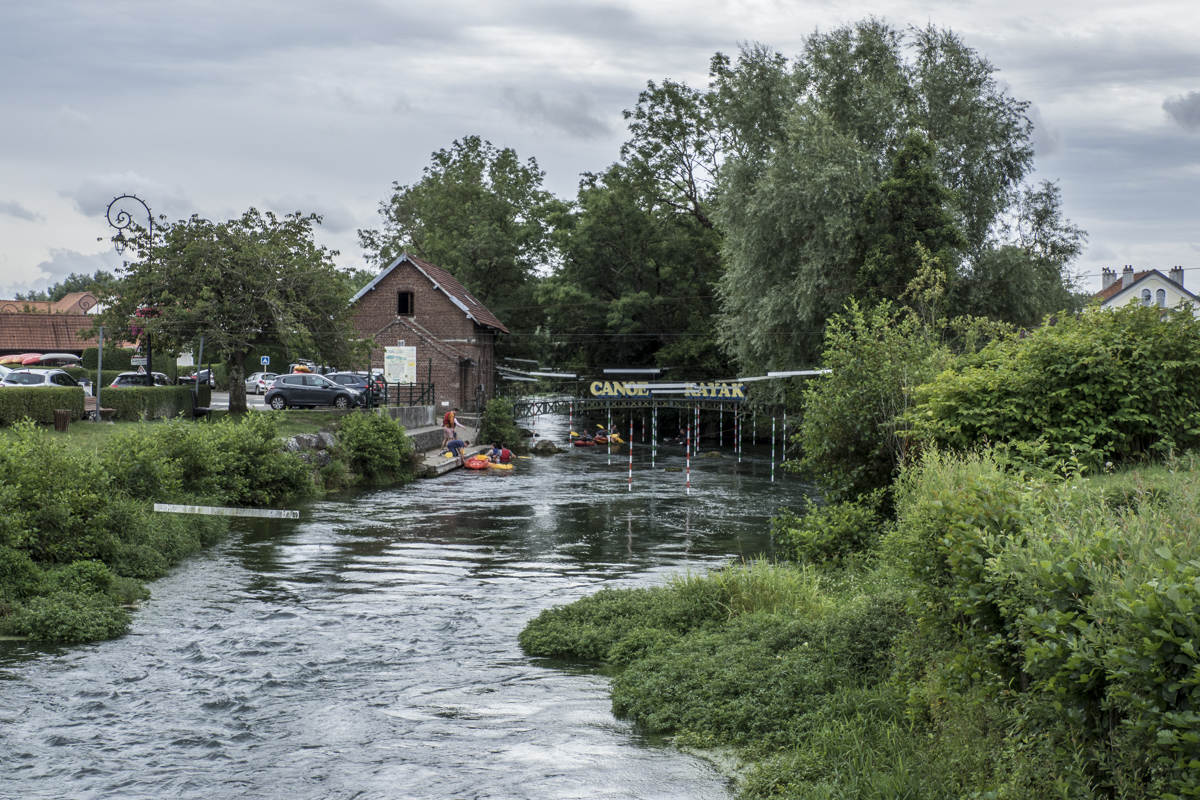
River Canche in Montreuil sur Mer in Pas de Calais in France
Ville Haute, Montreuil in Pas de Calais, France
I wound my way up to the centre of town in Ville Haute, a walled town built on the forty-metre high chalk hill above the old port. This town and its market place was once guarded by a royal castle built by French king Philippe Auguste (1180 to 1223). I was immediately entranced by my surroundings as I drove through the narrow cobbled streets lined with old buildings. As it was the tail-end of the siesta these streets were very quiet and I soon happened upon a parking space in Place de Darnétal. Montreuil still upholds the popular French tradition of freely available parking subject to not completely blocking a road. I was eager to get out and being exploring. This pretty square was home to a large war memorial, a little fountain and the old pharmacy (still dispensing medicines). The beautiful flower displays decorating the square I soon discovered were a common feature of the town. At the end of Rue Carnot, leading out of this square. I could see a grassy area and set off to investigate.

Place de Darnétal in Montreuil sur Mer in Pas de Calais, France
Remparts de Montreuil sur Mer in Pas de Calais, France
As I had hoped Rue Carnot had lead me to the remparts or ramparts of Montreuil and I was soon strolling around the top of the walls that encircle the town. For much of its history Montreuil, being on the edge of France, has been a border town and subject to several layers of fortifications. These walls were built during the thirteenth century and most of them remain to this day. They are a favourite haunt of both visitors and local inhabitants. As I followed the tree-shaded path I had great views of the rolling agricultural landscape on one side and I could look down on the town on the other side. Some areas on the wall may appear to be overgrown but this is the result of a delayed grass cutting project. Allowing the grass to grow naturally has several benefits including the reduced use of pesticides and fossil fuels and encouraging the re-introduction and re-generation of lost or endangered plants. Insect hotels have also been established in this area and bee hives have been installed to keep the bees happy and healthy. Frequent points of access onto the ramparts meant it was easy to walk down into the town when I saw something of interest. I left the ramparts to explore Rue Clape-en-Bas.
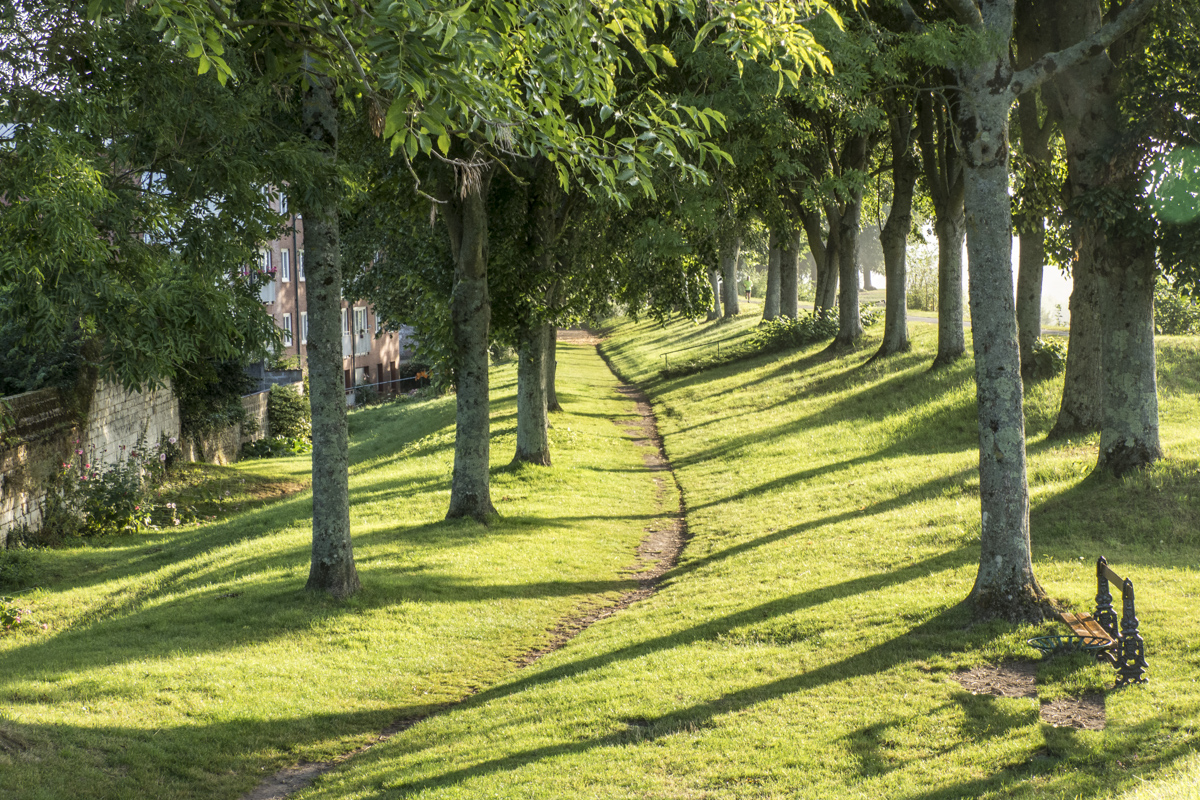
Early Morning on the Ramparts of Montreuil sur Mer in Pas de Calais, France
Rue Clape-en-Bas in Montreuil sur Mer in Pas de Calais, France
Rue Clape-en-Bas may be a very short cobbled street but it features some of the oldest houses in the town. These sixteenth-century workmen’s cottages were built of mud. They took their name from the sewers that served the buildings. A clapet was the metal flap that stopped the water flowing back. Restaurants and artisan workshops now occupy these unusual single-storey buildings. Just beyond the town end of this street is the chapel of the orphanage.

Rue Clape-en-Bas in Montreuil sur Mer in Pas de Calais, France
Chapel of the Orphanage in Montreuil sur Mer in Pas de Calais, France
During the fifteenth century Montreuil began to acquire a reputation for the care of orphans. At first they were cared for by nurses in the local hospital. In 1640, an orphanage was created due to the generosity of the then governor of Montreuil, Count de Lannoy. During the eighteenth century, the incumbent abbot rebuilt this institution and added the chapel of the orphanage. It was dedicated to the Saints Simon and Jude. The orphanage was administered by Franciscan sisters who provided care for the children, other inhabitants of the town and pilgrims passing through. This continued until it was closed in 1963. This chapel of the orphanage. This sandstone, chalk chapel is an eclectic building with a classic façade but featuring Gothic windows. Today the chapel is used for temporary exhibitions and the orphanage is a music school, Harmonie Municipale. After visiting the chapel I made my way back into the centre of town and Place Gambetta.
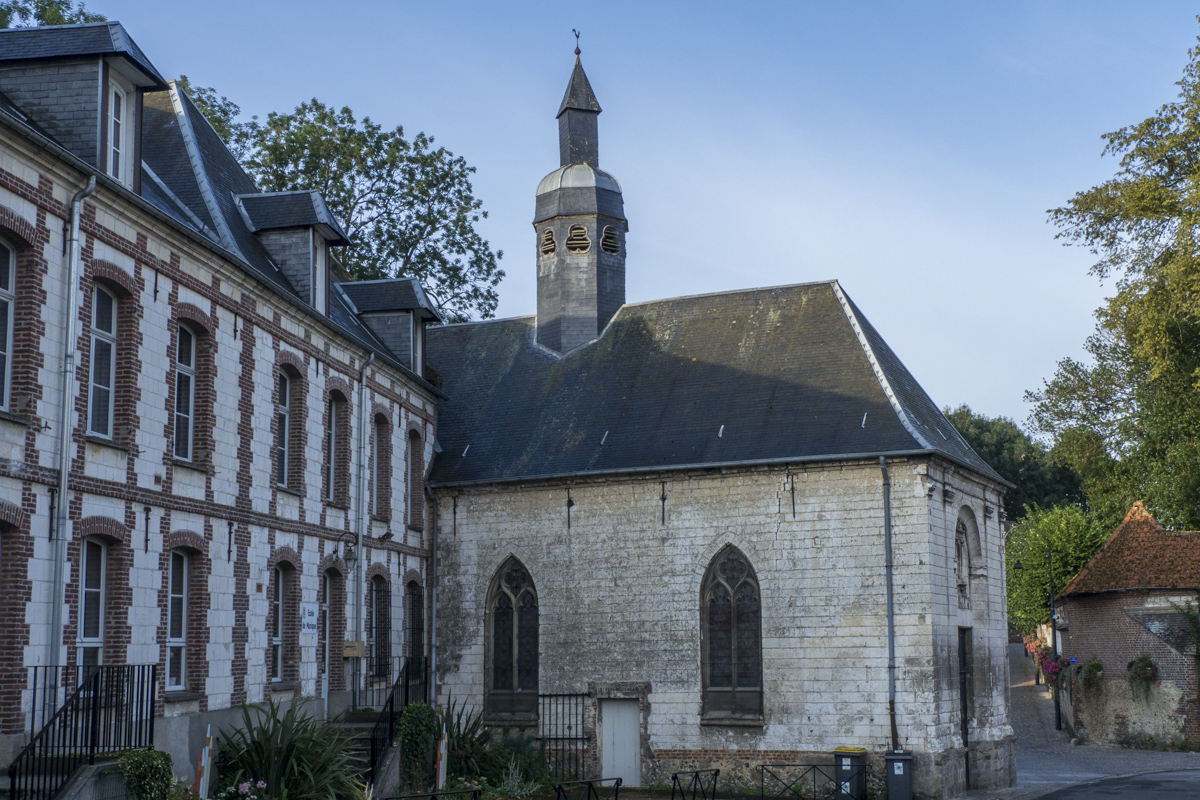
The Chapel of the Orphanage in Montreuil sur Mer in Pas de Calais, France
Place Gambetta in Montreuil sur Mer in Pas de Calais, France
The origins of Montreuil are closely linked to religious history – its name is derived from the Latin word ‘monasteriolum’ meaning ‘small monastery’. During the Middle Ages Pilgrims came from all over the world to pay homage to the numerous relics in the eight religious centres of the town. Natural disasters and wars dramatically reduced the number of religious centres. Now the two main churches are found in Place Gambetta. The most important is the
Abbey Church of Saint-Saulve now the parish church of Montreuil. Originally built during the twelfth century it was almost entirely rebuilt at the beginning of the sixteenth century. Its pleasing mix of Romanesque and gothic architecture means it is one of the most beautiful churches in northern France. Its sacred treasure is one of the richest in the North of France and some of it is on display inside the Abbey Church.

Interior of the abbey church of Saint Saulve in Montreuil sur Mer in Pas de Calais, France
The Chapelle de l’Hotel-Dieu also in Place Gambetta was founded in 1200 by Gauthier de Maintenay and functioned as part of the hospital until 1992. This church has also undergone several reconstructions but has retained its flamboyant Gothic architectural style with a spire reminiscent of the Notre Dame in Paris. The old hospital is now occupied by the Hermitage Hotel. Also in Place Gambetta is the elegant nineteenth century building that houses the city hall. The muddle of streets in the town centre are linked by narrow alleyways known as venelles and they act as very useful short cuts. I used one to make my way in the Place du Général de Gaulle, the main square.
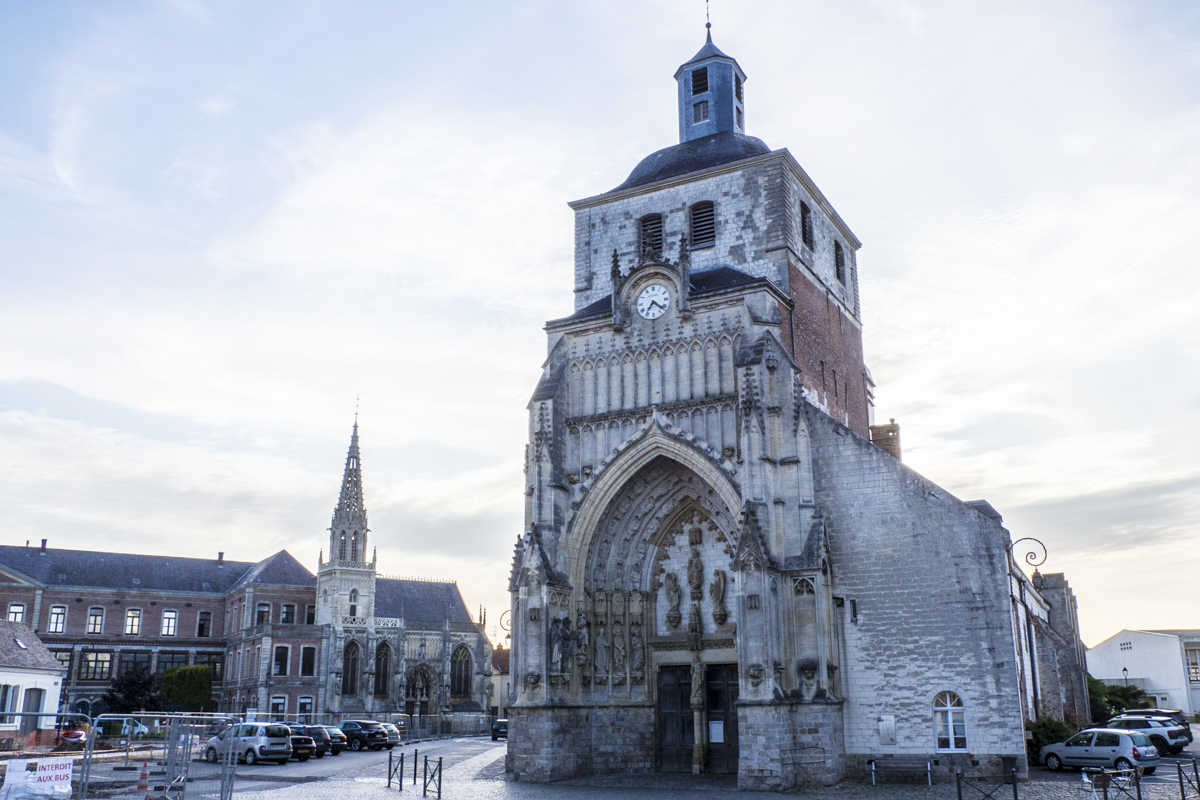
Place Gambetta in Montreuil sur Mer in Pas de Calais, France
Place du Général de Gaulle in Montreuil sur Mer in Pas de Calais, France
A wide, open space, useful for the parking of cars, but, more importantly, Place du Général de Gaulle is ringed by restaurants and independent shops. It is the hub of the city and also home to the equestrian statue of Field Marshal Sir Douglas Haig. A reminder of the town’s military entanglements during the two World Wars. The town was the headquarters of the British Army in France during World War 1 and occupied by German troops during World War II. The original statue was inaugurated in 1931. It was used for target practice by the Germans and damaged beyond repair but was re-cast and replaced in 1950. Behind the statue is the town theatre that occupies an early nineteenth century grain store.
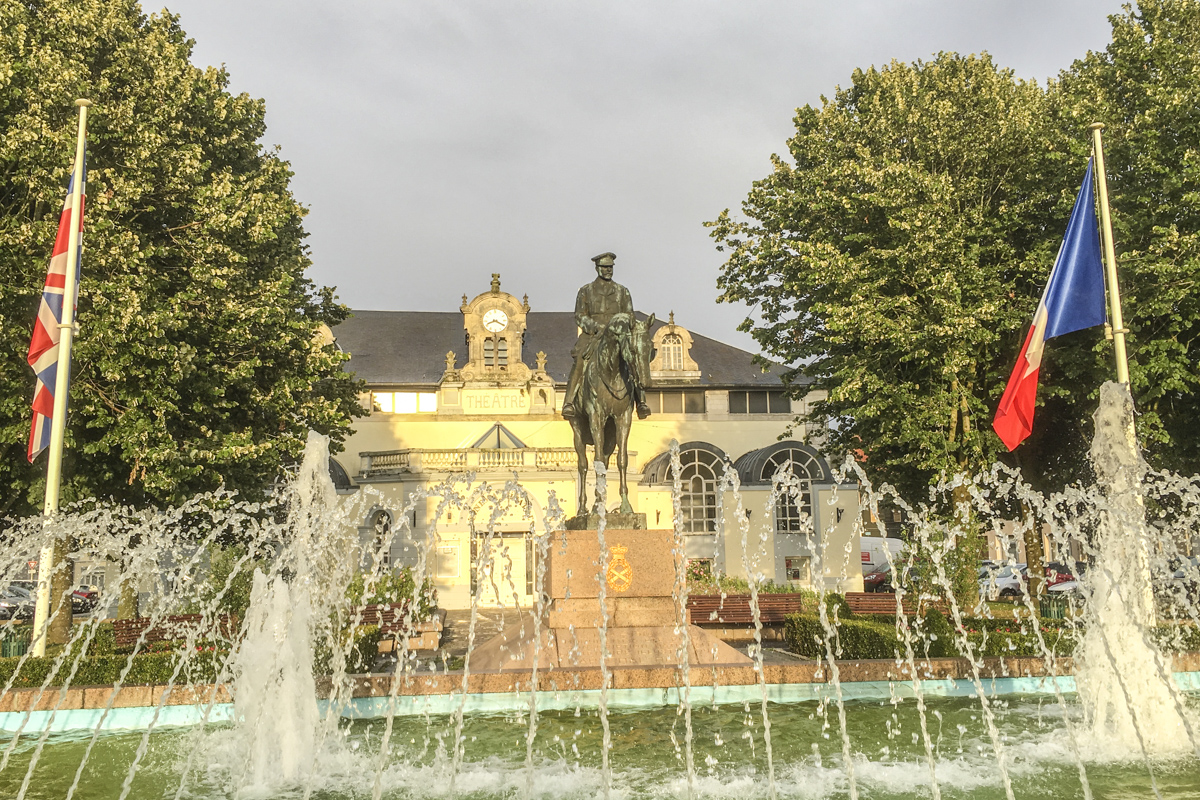
Place du Général de Gaulle in Montreuil sur Mer in Pas de Calais, France
Among the many shops in the square two in particular caught my attention. As a lover of cheese Fromagerie Caseus drew me inside like a magnet. The display of cheeses is amazing and the choice incredible. Not to be missed by anyone who enjoys a good cheese. Montreuil is fast gaining a reputation for its great gastronomy and it was easy to see why
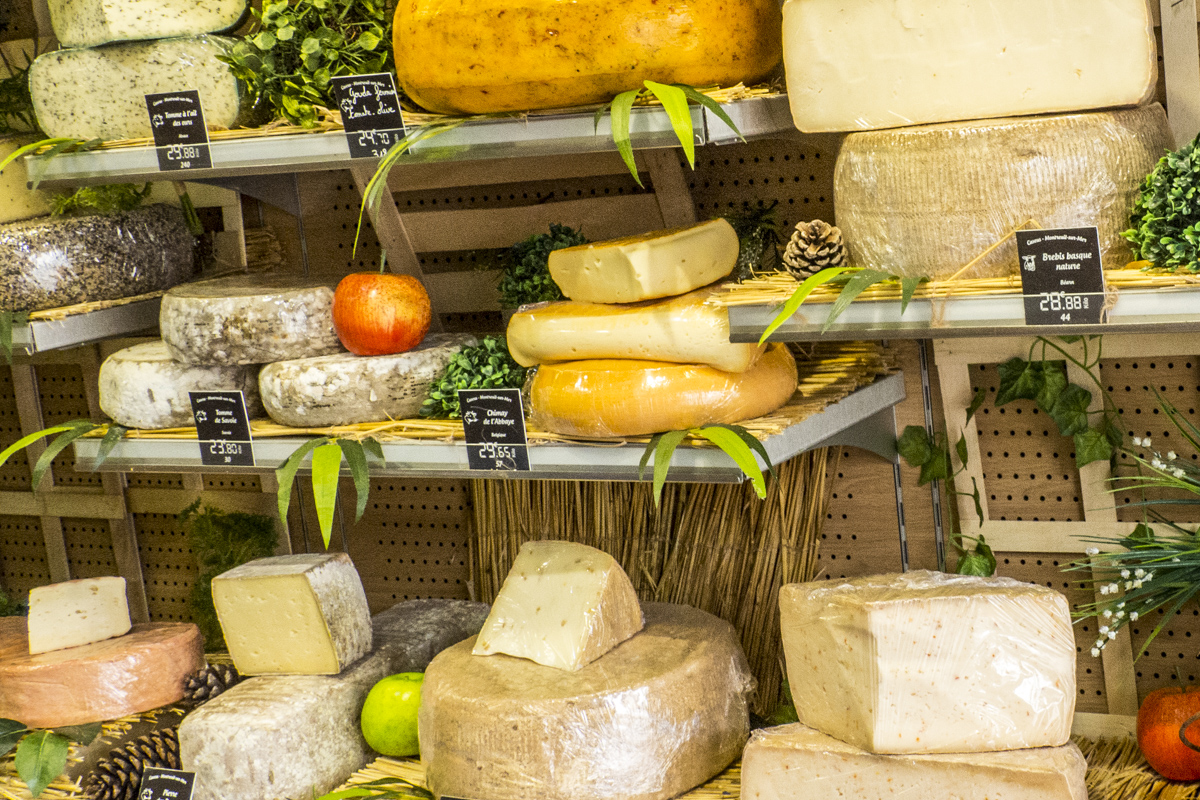
Cheese on Dispaly at Fromagerie Caseus in Montreuil sur Mer in Pas de Calais, France
Le Cave de Montreuil caught my eye as I was leaving the square. Attracted by the Tudor style frontage I venture inside to find a treasure trove of delicacies and the best cup of coffee in town – sipped appreciatively on the outdoor patio on the first floor. Graciously carried up there by Olivier, proprietor of this lovely establishment. It was good to have a break and plan my next move. I had heard there was another Briton, Mary Wooster, who had left her mark on Montreuil and decided to investigate.
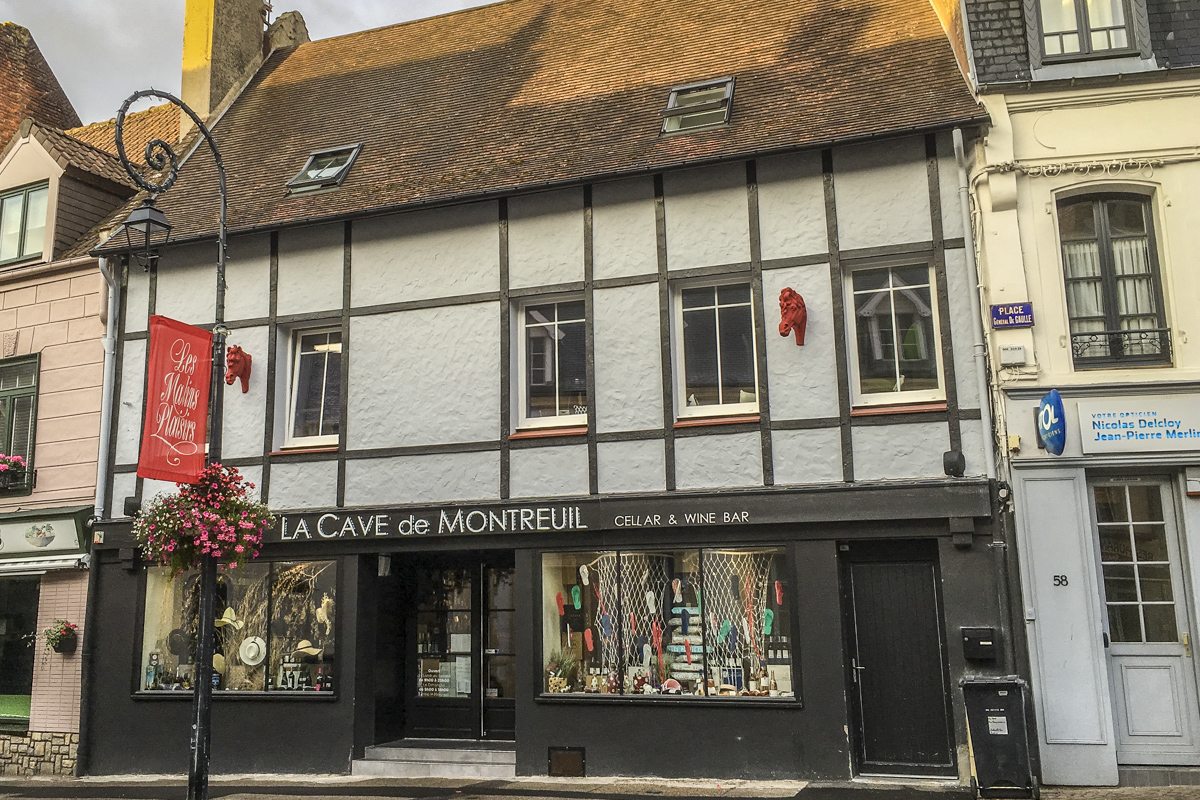
Le Cave de Montreuil in Montreuil sur Mer in Pas de Calais, France
The Musée de l’Espoir de Franck et Mary Wooster in Montreuil sur Mer in Pas de Calais, France
Mary Wooster was the owner of L’hôtel Acary de la Riviêre a hôtel particulier built in 1818 and considered to be one of the best residences in Montreuil. Hôtel particulier describes a large mansion built to a specific design and capable of entertaining guests. It was inherited by Mary Wooster from her first husband. She subsequently married Frank Wooster and they lived in the property until the outbreak of World War II when they moved to Paris. She continued to own the property and visited infrequently. In 1973 she bequeathed the mansion and its contents to the town. Following her death in 1978 the mansion was opened to the public as the Musée de l’espoir de Franck et Mary Wooster or the Museum of Hope. She also gave the town the fourteen-bedroom annex in the garden of L’hôtel Acary. This is now the hotel and restaurant Chateau de Montreuil. When the museum is closed the house can be viewed from the garden of the restaurant. Both the building and its collection of furniture, including bidets on castors, are worth seeing. Across the road from this museum is the Citadel my next, and last, stop.
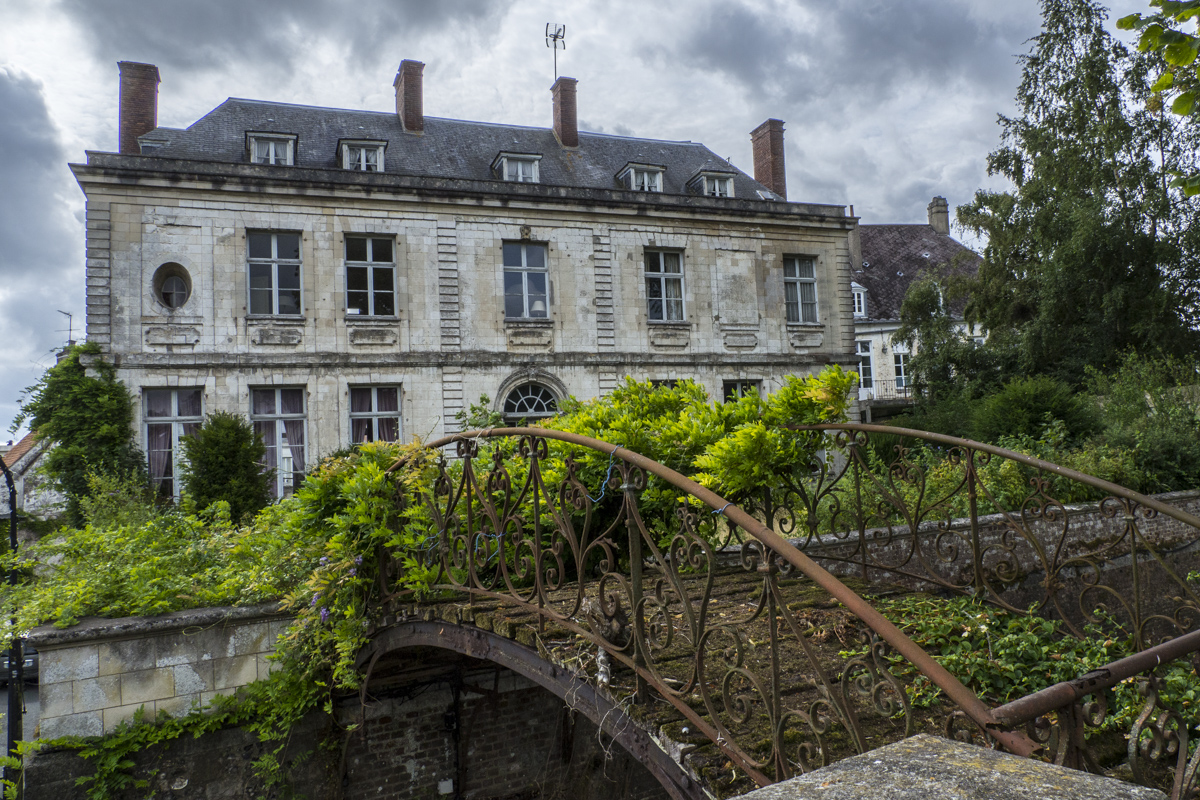
L’hôtel Acary de la Riviêre in Montreuil sur Mer in Pas de Calais, France
The Citadelle of Montreuil sur Mer in Pas de Calais, France
There has been a castle or Citadelle of Montreuil sur Mer since the first royal castle was built during the twelfth century. The present citadelle was built towards the end of the sixteenth century. Entrance is through Queen Berthe’s tower which is also a museum of bats. Other features include a hostel, a shop, dungeons, the White Tower and the Gatehouse. For those who want to learn more about the history of the citadelle there is also an on-site museum. The Roger Rodière Museum is housed in different parts of the citadelle including a collection of archaeological pieces in the eighteenth century hospital chapel.
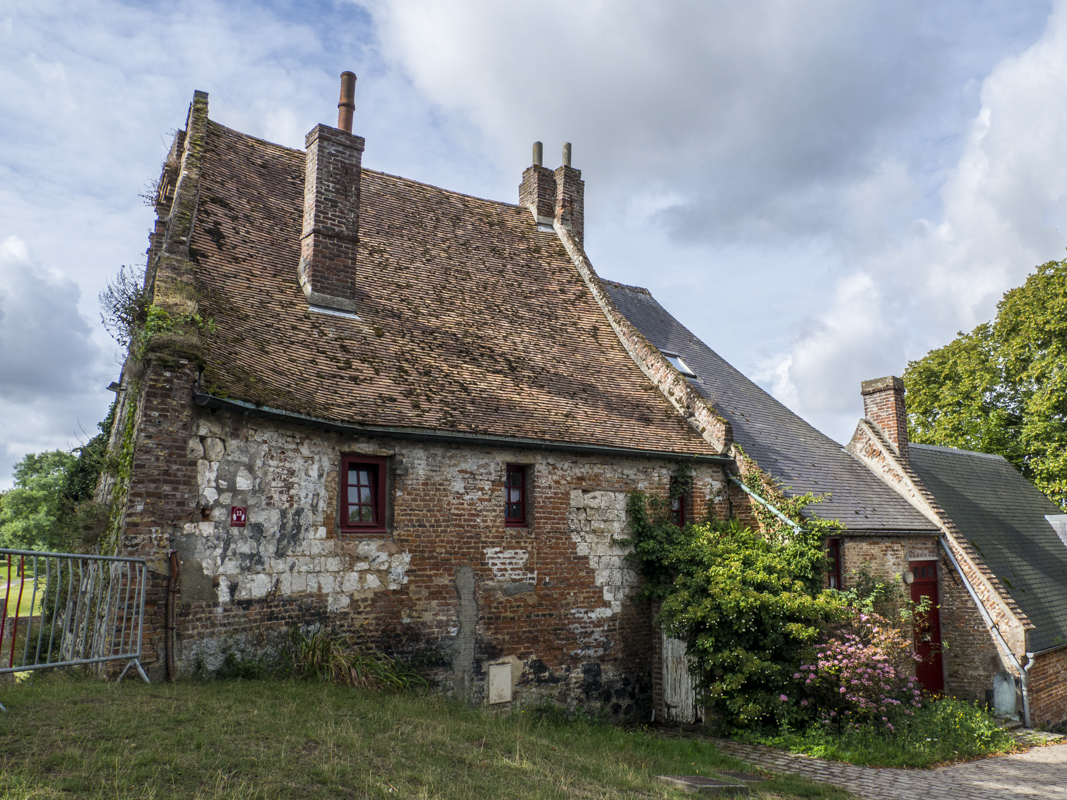
The Guard House inside the Citadelle in Montreuil sur Mer in Pas de Calais, France
Victor Hugo in Montreuil sur Mer in Pas de Calais, France
I was not the only one to be captivated by Montreuil. Victor Hugo spent half a day here and later produced one of the longest novels ever written, Les Misérables based on the sights he saw and the people he encountered while he was in town (with his mistress). He also found time to write to his wife describing the places he visited. I was fortunate to have arrived in town on the afternoon of the last night of the annual Son et Lumière festival of Les Misérables in the town’s citadelle. The cast of six hundred is drawn from the inhabitants of the town. I was enthralled throughout the performance.
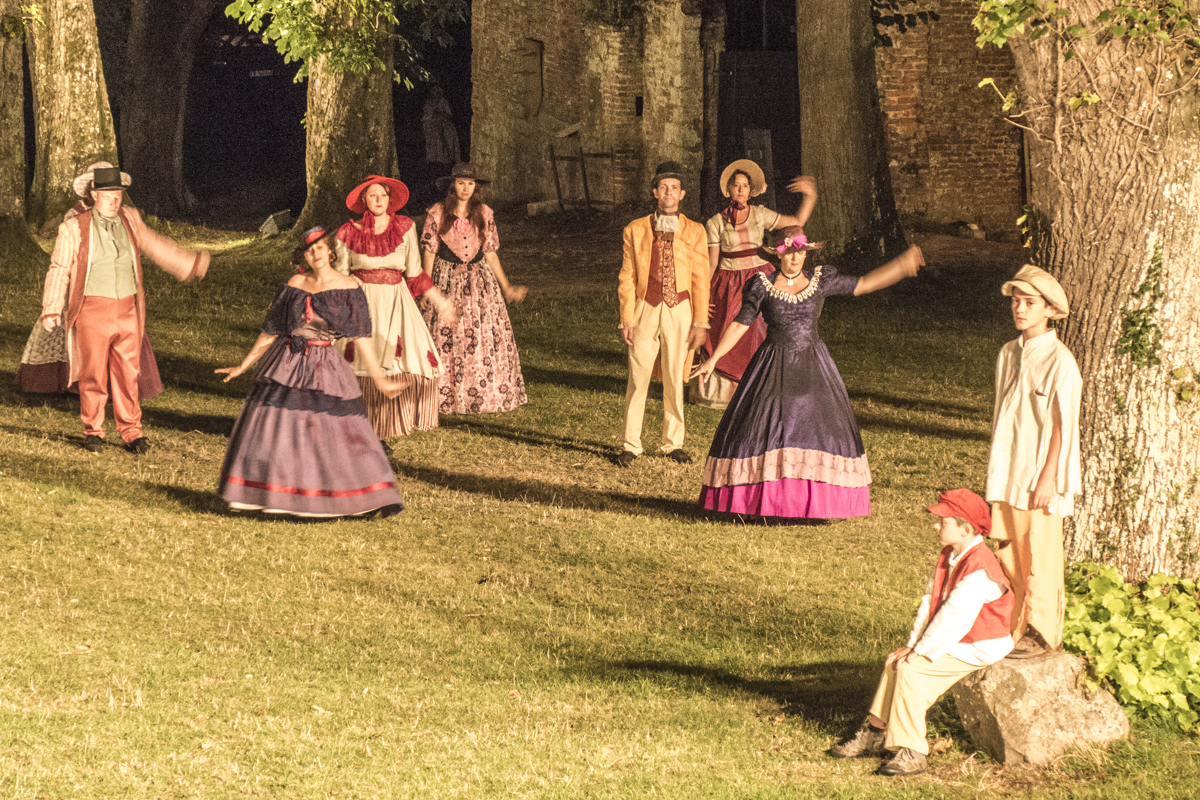
Les Misérables at the Citadelle in Montreuil sur Mer in Pas de Calais, France
Where to Eat in Montreuil sur Mer in Pas de Calais, France
I chose to eat at Le Clos des Capucins on the main square. Inclement weather meant I could not sit outside but I had a table just inside by the window which was the next best thing. Although this restaurant specialises in offal (and the French do have a way with offal) I chose the cod ‘special’. It was beautifully cooked and accompanied by a great sauce and buttery mashed potato. I started with a smoked salmon dish which was both very attractive and delicious. I was welcomed warmly by the staff who helped me stumble my way through the specials written on the blackboards displayed on the walls. I particularly like the fact that most restaurants here offer set menu prices for two or three dishes and always offer a good choice. This restaurant was comfortable busy resulting in a very relaxed and pleasant ambience.

Starter at Le Clos des Capucins in Montreuil sur Mer in Pas de Calais, France
Where to Stay in Montreuil sur Mer in Pas de Calais, France
For nearly two hundred years Maison76 was the Apothecary’s mansion supplying pharmaceutical services to the people of Montreuil sur Mer. It has now been restored to its former glory as a maison du charme. Offering three bedrooms and one suite it is truly unique. Guests can enjoy the elegant eighteenth century lounge or the tranquil, beautiful, secluded walled garden. And maybe even enjoy a dip in the pool. Tim is an excellent host anticipating every need before the guest is aware of it and providing an excellent breakfast featuring local and home-made produce. A very special place.
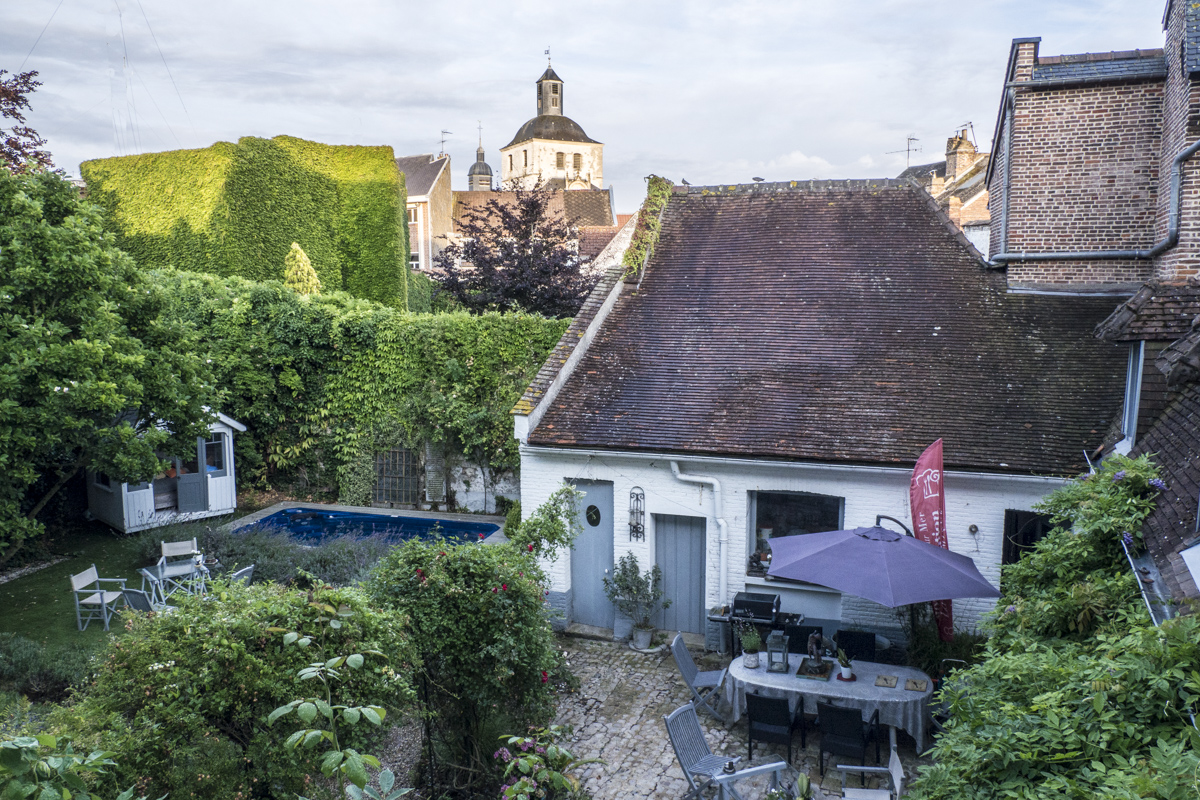
The Walled Garden at Maison 76 in Montreuil sur Mer in Pas de Calais, France
How to Get to Montreuil sur Mer in Pas de Calais, France
I took my car across to France on the DFDS car ferry crossing from Dover to Calais. It was a very pleasant crossing especially as I took advantage of the Premium Lounge enjoying a comfortable seat, a nice selection of drinks and snacks and free WiFi.
On arrival in France it took me about an hour to drive to Montreuil sur Mer on the A16 motorway. Parking in the town was not a problem and it is free everywhere.
Available on GPSmyCity.com
This article is now featured on GPSmyCity. To download this article for offline reading or travel directions to the attractions highlighted in this article, go to Walking Tours in Montreuil Sur Mer on GPSmyCity
This article was based on the personal experience of Valery, an ExperiencedTraveller.